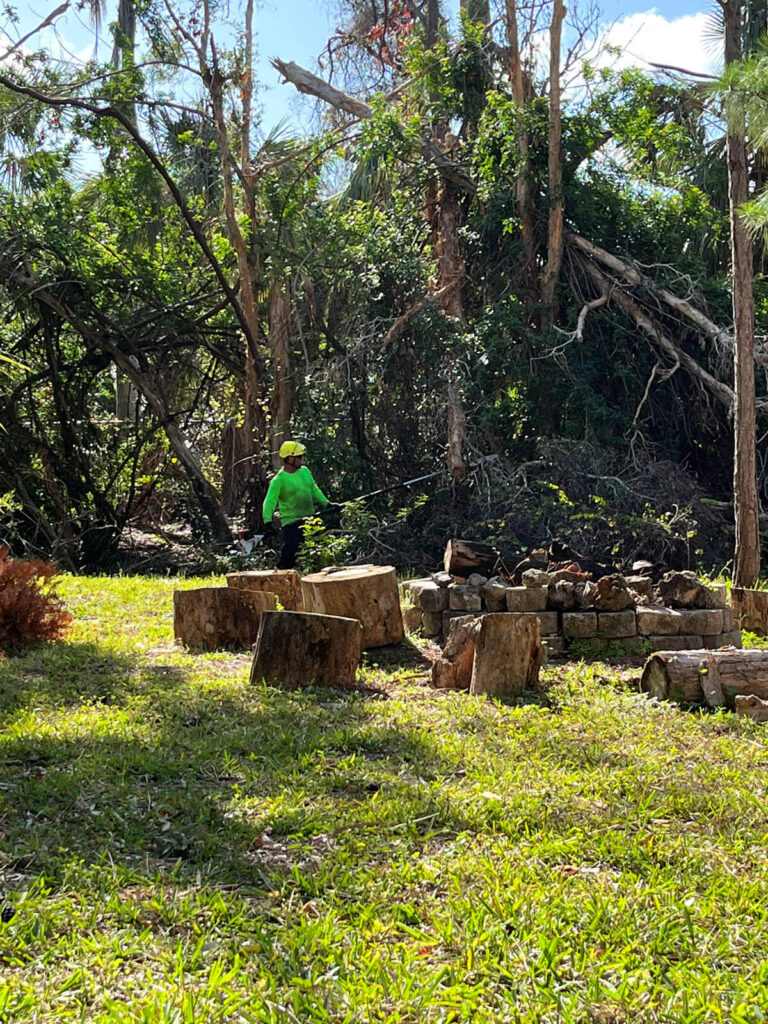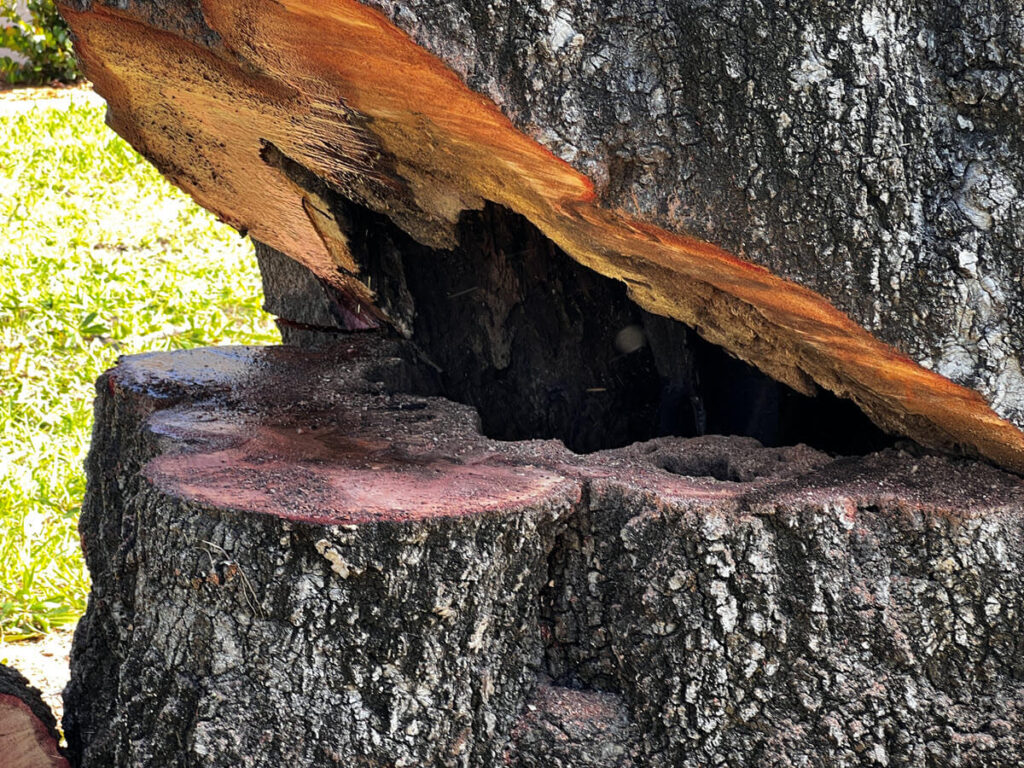
Trees are beautiful inhabitants of any homeowner’s yard. They work tirelessly day and night to clean the air by absorbing carbon dioxide and releasing oxygen. They also provide habitat for a variety of birds and animals. Unfortunately, sometimes trees get uprooted, which creates a risky environment and poses a threat to our properties.
While scientists tell us that trees communicate with each other by transmitting information about insect attacks, unfortunately, they can’t speak with us. Since some diseases affect roots without signs visible to the naked eye, wouldn’t it be wonderful if they could inform us about the problems early on? While learning the language of trees is still a work in progress, keep reading to learn why trees get uprooted and discover some helpful tips on how to prevent this and spot some telltale signs of root diseases.
Why Do Trees Get Uprooted?
Did you know that quite often 90% of a tree’s route system occupies only the top 18 inches of the soil? This makes them susceptible to wind damage along with a variety of reasons including interior and exterior factors that may pile up to cause a tree to get uprooted.
Weak Root Systems
Shallow or poorly-developed roots cannot anchor the tree securely, especially in adverse weather conditions like heavy winds or storms. Young trees generally tend to have unformed root systems, which makes them more susceptible to damage. As they age, the main reason why a tree may not develop an adequate root system is hard earth.
Age and Health
Older trees or those in poor health are more susceptible to uprooting. Decay, disease, or damage can compromise a tree’s structural integrity, making it more likely to fall during adverse conditions. For example, excessive moisture in the dirt around a tree may cause bacteria growth which may weaken the roots due to rotting. Another example is damage caused by termites that may fall trees by eating through their roots.
Soil Conditions
The type of soil a tree is planted in can significantly affect its stability. Loose, sandy soils are less stable than compacted, clay-rich soils. Inadequate soil preparation during planting might weaken a tree’s grip on the ground.
Extreme Weather
Strong winds, thunderstorms, and hurricanes can exert immense force on trees. Trees with dense canopies or those that haven’t been pruned properly offer more resistance to the wind, increasing the chances of uprooting. Also, softwood trees, such as pines, generally tend to be less wind-resistant, with perhaps the exception of the Monterrey pines.
Improper Pruning
Over-pruning or improper pruning can disturb a tree’s balance, reducing its stability. Topping, for instance, can result in weak, top-heavy growth that can make a tree prone to uprooting. The rule of thumb is to make sure the tops of the trees aren’t disproportionately heavier than a tree’s root system.
How to Prevent Trees from Uprooting

With the help of a certified arborist, you can make sure that your trees are healthy and less susceptible to wind damage.
Select the Right Tree Species
We would encourage you to choose native tree species for your yard to begin with because native trees tend to have stronger root systems, making them more stable. For example, redbuds and majestic live oaks make an excellent choice for Florida residents.
Proper Planting
When planting a tree, it’s important to ensure that the hole is deep enough to accommodate its roots. Planting at the right depth, so the root flare is at the soil surface, will encourage proper root development and anchorage.
Regular Maintenance
It’s important to prune your trees regularly to maintain a healthy canopy. Proper pruning can improve a tree’s structural stability. Removing dead or diseased branches helps reduce wind resistance.
Mulching
Applying mulch around the base of the tree helps retain soil moisture, regulate soil temperature, and prevent soil compaction. Mulching can also protect the roots from damage caused by mowing or other yard equipment.
Staking
When taking care of your young trees, you can use stakes to provide temporary support. However, do not keep them in place for too long, as they can hinder the tree’s ability to develop a strong root system.
Protection from Construction
If you are planning on construction or landscaping work near trees, you should take measures to protect the tree’s roots. This may involve fencing off the root zone or limiting heavy machinery access.
Regular Inspection
You should periodically inspect your trees for signs of disease, decay, or damage.
Reduced Growth
Trees affected by root diseases often exhibit reduced growth, both in terms of height and overall size. They may appear stunted and have smaller leaves or needles.
Yellowing or Wilting Foliage
Discolored or wilting leaves can be a sign of root disease. The tree may show symptoms like chlorosis (yellowing of leaves) or necrosis (brown or dead areas on leaves).
Dieback
Dieback is the progressive death of branches, starting from the tips and moving inward toward the trunk. It can occur on one side of the tree or throughout the canopy.
Sparse Canopy
The canopy of the tree may become less dense, with noticeable gaps or thinning foliage.
Premature Leaf Drop
Trees affected by root diseases may drop leaves or needles prematurely, often before the typical fall season.
Mushrooms or Fungal Growth
The presence of mushrooms or other fungal growth around the base of the tree or on the roots is a clear indicator of root disease. Different species of fungi can cause various root diseases. For example, Armillaria is a fungus that causes Mushroom Root Rot, a disease that was reported to affect more than 200 species of trees and shrubs around Florida.
Cankers on the Trunk
Cankers are areas of dead tissue on the tree’s trunk or branches. These can appear as sunken, discolored, or oozing areas and are often caused by pathogens that affect the tree’s vascular system.
Bleeding Sap
In some cases, trees may ooze sap or gum at the base of the trunk. This can be a response to a pathogen affecting the root system.
Root and Soil Symptoms
Digging around the root zone can reveal signs of root disease, such as blackened or decayed roots, lesions, or unusual root patterns. The soil around the tree may also show signs of poor drainage or a foul smell.
Proper tree care, from species selection to regular maintenance, is key to ensuring that our trees stay healthy and wind-resistant. At Joshua Tree, Inc., we are happy to help you take care of the trees on your property. Contact us today!
